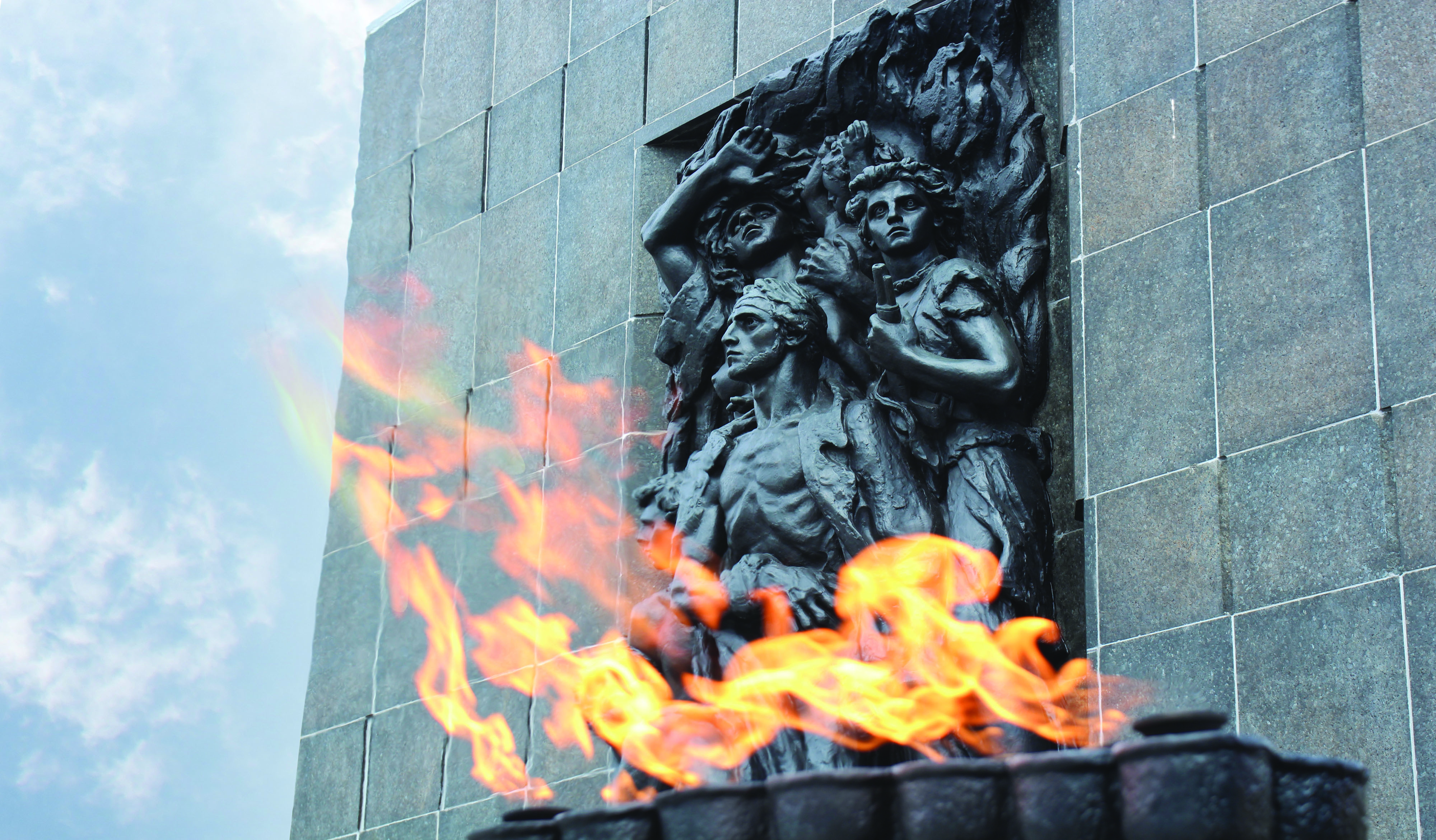Resounding Resilience: The Enduring Spirit of Music in the Warsaw Ghetto

Approximately 7,000 Jews were captured at the end of the fighting and sent to the Treblinka killing center where they were murdered. Another 42,000 were deported to forced-labor camps and to the Lublin/Majdanek concentration camp. Most of these people were executed in November of 1943 in a two-day shooting operation known as Operation Harvest Festival (Erntefest).
As Warsaw’s prewar Jewish population was the largest in Europe, the Warsaw Ghetto was the largest Nazi ghetto in German-occupied countries, imprisoning approximately 400,000 Polish Jews. In July 1942, the Nazis deported more than 35,000 Jews from Warsaw to the Treblinka killing center, described as the “Great Action”. In response to these deportations, underground resistance groups banded together to create the Jewish Combat Organization (Zydowska Organizacja Bojowa; ZOB). These groups managed to obtain a relatively small number of weapons, mostly pistols and explosives from the Polish military underground movement called the Home Army (Armia Krajowa; AK) In January of 1943 upon learning of more mass deportations, Jewish fighters infiltrated a column of Jews being forced to a transfer point. These fighters were able to break through German ranks and fight their German oppressors. Most of these fighters lost their lives but it was enough to disorient the German troops and give the Jews a chance to disperse.
Encouraged, the people of the Warsaw Ghetto began to build subterranean bunkers, knowing the Germans would return for a final deportation of the Jews. On the eve of the Passover holiday in April 1943, the Jews began their final act of resistance. They fought for twenty-seven days in what became known as the Warsaw Ghetto Uprising. They stunned German troops and were able to force the troops to retreat behind the ghetto wall. After nearly a month of fighting by the Jewish fighters, the Germans burned down the ghetto block by block ending the resistance. They sent a message to Berlin headquarters that “The former Jewish Quarter in Warsaw is no more.”
Although most of the people in the Warsaw Ghetto lost their lives to their German oppressors, the uprising in Warsaw sparked other ghetto uprisings in Bialystok and Minsk.
Today, all over the world ceremonies commemorating the victims and survivors of the Holocaust are linked to the dates of the Warsaw Ghetto Uprising.
Music had a special place in the struggle to maintain humanity while opposing Nazi barbarism. Not only did it refresh the spirit and provide emotional expression, but the ability of music to transcend languages and ethnicities helped sustain communal solidarity.
Well before WWII, Warsaw had a rich and wide-ranging Jewish musical culture. During Nazi occupation, Leszno Street had several cafés and clubs that presented live musical entertainment and was considered the “Broadway” within the Warsaw ghetto. There were 5 Yiddish and Polish theaters that operated within the ghetto which offered serious theatrical offerings as well as lighter revue shows consisting of choral singing, dancing, and musical comedy. During the Nazi occupation the Jewish Symphony Orchestra was established in late 1940 with the first performance on November 25 and featured works by Beethoven and Grieg. Mozart and Schubert were also heavily featured in these performances. Then, in 1941, one of the four prominent conductors of the orchestra, Szymon Pullman, began to expand the repertoire and included beloved local celebrities like Diana Blumenfeld, whose alto voice inspired many Warsaw songwriters to write for her, and Marysia Ayznshtat, who was called the “nightingale of the ghetto”.
Many new songs were composed in response to the events in the ghetto. These songs were written to provide encouragement to fellow inmates. Some songs paid tribute to certain ghetto characters for their heroism, while others criticized Jewish authorities.
Although conditions in performance spaces had inadequate lighting, bad acoustics, and in many cases crumbling venues, these concerts were a way for the ghetto inhabitants to find comfort and joy at a time of such terror and hate.
San Francisco Opera and Taube Philanthropies will present a special one-night only concert, Rise Up And Resist: A Commemorative Concert on the 80th Anniversary of the Warsaw Ghetto Uprising, on April 28 at the Dianne and Tad Taube Atrium Theater.
Greg Henkel, Managing Director, Artistic and curator of the commemorative program, said of the concert: “The program is quite eclectic musically and thematically spanning solemn remembrance, outlawed music performed in the ghetto in defiance of the Nazi regime, and uplifting popular music of the time. There will be partisan songs that represent the spirit of resistance in the ghetto, religious songs for remembrance, folk music that celebrates the rich cultural heritage (Jewish, Polish-Jewish, and Polish), music that was played by the Jewish Symphony Orchestra in the ghetto, and popular cabaret songs of the time that remind us of the indomitable spirit that couldn’t be suppressed.”

